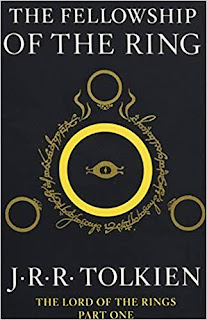Today we come to the final letter of the alphabet in this series of posts on the theme of SF and fantasy ... Z!
And because there are not too many books starting with Z which I have read, although one of those is one I should have read - Zeroes by Scott Westerfeld, Margo Lanagan and Deborah Biancotti - and even fewer authors with a name starting with Z, I’ll cheat a little here and begin by slipping in a book that doesn’t actually start with Z, because it has a bee theme and so.... Zzzz, the sound of bees.
How To Bee, by Aussie children’s writer Bren McDibble, won last year’s Australian Children’s Book Council award for younger readers, among others. It’s set in a future Australia where bees have become nearly extinct - there are a few in captivity, in an attempt to bring them back. Just imagine what this means for humans! We’re already having problems with bees running the risk of dying out and this story is not too difficult to believe.
But Peony, the ten year old heroine, is living on a fruit farm, hoping to be promoted to the job of bee, when she will be one of a group of children whose job is to climb the fruit trees and fertilise them. The farm community are living a fairly primitive lifestyle -Peony and her sister are living with their grandfather - but are happy and proud of what they do. Then Peony’s mother, who has been working in the city to raise extra money, takes Peony to live with her in the home of a wealthy family as servants, and Peony finds a very different life from the one she has known...
A children’s book, but a children’s science fiction book, well researched and based on a believable premise. It is easily available as it is new.
Zzzz...
And finally, by request, the late, great Roger Zelazny...
I confess I haven’t read much of his work - my sister was the Zelazny fan in our family way back when - but I have read some of his books, including collections of his short stories.
And he was the guest of honour at my very first science fiction convention, Unicorn 4, held in Melbourne many years ago, so I’ve heard him speak. I remember him sitting on the stage, puffing on a pipe. I recall someone from the audience asking why a certain character smoked so much. He explained that, before he started smoking a pipe, he smoked cigarettes and whenever he got stuck on a scene, he would light up while thinking about it and then say, “Oh, yes! ‘He lit a cigarette...’” An interesting insight into his writing process!
He is best known for his Chronicles of Amber, starting with Nine Princes In Amber. Amber, by the way, is a place, not a gemstone.
He is also known for a number of books based on various mythologies, such as Lord Of Light(Hindu) and Creatures Of Light And Darkness(Egyptian). The thing is, these gods aren’t actually gods, as such, though, with their powers, they might as well be. But the novels are set across a number of planets and among other things, Osiris has turned bits of his enemies into household goods, such as a nervous system carpet, so he can step on it and enjoy the pain, and an ashtray which can also feel pain...
He was quite a prolific writer, so if you enjoy his work you should have a fair few to read.
I loved the introductions he wrote to his short fiction. My favourite one was explaining how he learned something from Ernest Hemingway, who said that the best way a writer can get depth into his or her work is to write a scene that tells you something about your character...then cut it out. Then the reader will feel there is more about the character than they have been told. Zelazny had done that and was publishing the missing bit of one story in the collection.
If you aren’t familiar with his work, you might consider starting with his short fiction, which is well worth reading and doesn’t require the same time investment or focus.
Here is a link to his Wikipedia page, which tells you quite a bit more about him than I can give in one post.
His books are available both in print and in ebook. I’ve been buying the ebooks.
Well, that’s it for A to Z 2019, though tomorrow I will be posting a short reflection. I hope you enjoyed this theme! If you did, feel free to follow this blog. I post fairly regularly, an average of a couple of times a week. My blog theme is children’s and YA and genre fiction, with the occasional non fiction, mostly history.
Cheers!
Sue









